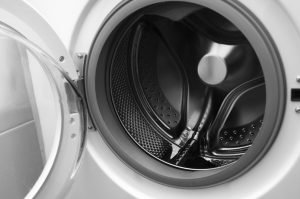What Will the Internet of Things Connect to Next?
An egg carton that digitally lets you know when to buy more eggs.
A football helmet that reports head injuries immediately.
An elevator that sends out an error message before anyone notices a problem.
More and more people are living in a world where their coffee is ready before their feet even touch the kitchen floor, their car knows the fastest route to an appointment based on a calendar invite, and their business is implementing serious financial savings by monitoring its energy usage. Welcome to the ever-growing Internet of Things.
In the US, 5.5 million new “things” are added to the Internet of Things (IoT) on the daily.
The result: ease of use, cost savings, and a positive environmental impact to boot. Does it plug in and have an on/off switch? Then it could be one of the 6.4 billion things currently being accessed online. Devices added to the IoT increased by a whopping 30% in the past year, according to Gartner, a leading IT analyst firm.
Travelers are becoming more mindful of environmental impacts and, in fact, two-thirds of travelers gravitate to hotels and businesses that are green on the inside as well as out, according to TripAdvisor. Hotels that brand themselves as green hotels not only draw more guests, but the cost savings are compelling more property managers and hoteliers to see how the IoT can benefit their operations.
For Hotels:  The IoT can save businesses money on water, electricity, and labor. And reduce the hotel’s carbon footprint. Knowledge is power. In this case, data is power.
The IoT can save businesses money on water, electricity, and labor. And reduce the hotel’s carbon footprint. Knowledge is power. In this case, data is power.
- More Efficient Laundry: Connecting a smart-meter device provides data that will help a hotel understand its usage – hot and cold water, energy, chemicals – and help determine if new appliances should be purchased or if the company qualifies for energy-saving rebates.
- Lighting: Just one example: Lights can be managed with an ambient light sensor to shift lights to a lower setting when enough natural light is available. Here’s one more: Nighttime lighting can increase when motion is detected.
- Electrical Monitoring: One cool way the IoT can monitor electricity usage is by connecting to power sockets. If an outlet is exceeding its power usage, an alert will be sent to report a possible electrical problem.
- Less Labor: A smart device can manage the laundry room remotely. Alerts when linens are ready equal shorter wait times for rooms to be ready
According to the IoTevolutionworld.com, here’s what you want to look for in a Smart Laundry System:
- NSF-certified meters on all machines
- Meters that can be shared with your utility company
- Ability to collect and upload real-time data
- Secure, cloud-based app
- Energy-saving data
Going green is now going beyond the recommended use of timers, LED lightbulbs, compact florescents, and low-flow toilets and shower heads. What will we see more of in coming years?
- Solar panels
- Systems being monitored by smart devices
- Smart hotels with self-check-in and apps that tailor the room’s temperature, lighting, and curtains to a guests’ preferences before they arrive. Oh yeah, and fill up that fridge with the requested bar supplies.
With just a touch of a fingertip…millions of more devices will be making up this wide, wide world of Internet things. What will you connect to next?




